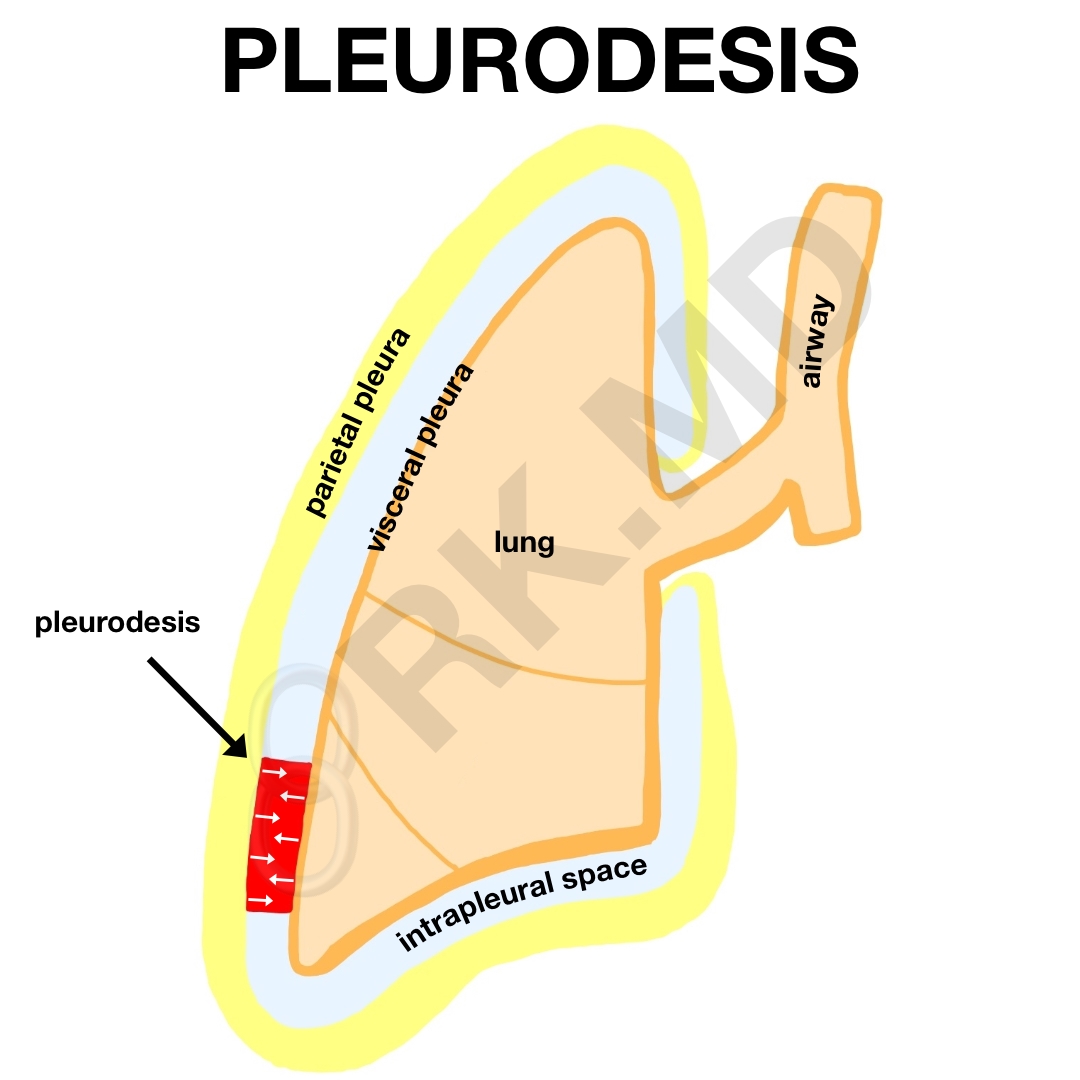Pleurodesis aims to obliterate the intrapleural space in patients with recurrent malignant/non-malignant effusions and recurrent pneumothorax. In mechanical pleurodesis, surgeons usually perform a video-assisted thoracoscopic surgery (VATS), identify the parietal pleura, and rub an abrasive material against the parietal pleura. In chemical pleurodesis, agents like talc, minocycline, betadine, doxycycline, and silver nitrate are introduced into the intrapleural space to generate an inflammatory response through chemical irritation of the pleural lining.
In the illustration, the red zone indicates an area where pleurodesis is performed. The procedure will ultimately encompass the lung to achieve complete apposition between the visceral and parietal pleural layers. Using chemical or mechanical sclerosis techniques, a diffuse inflammatory response promotes fibrin adhesions and fibroblasts’ proliferation, limiting fluid or air from filling the intrapleural space.
Drop me a comment below with your experience regarding pleurodesis!







Hi Dr. Rishi,
Educational for me an aspiring NP student. I also thought of it as I have a patient w/ malignant pleural effusions being treated w/ PLEUREX.
Thank you
Right on! 🙂
Hi Dr Rishi,
Excellent diagram. i need your permission to use it for educational and teaching purpose.
Dr Prince James
Professor, Pulmonary Medicine
Christian medical College Vellore, TN, India 632004
Hey Dr. James, please use it as you wish! A kind reference with my name and site URL would be appreciated. 🙂